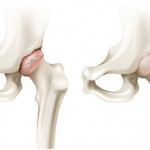

 Ankylosing spondylitis (AS) can be improved with a healthy body weight and exercise. Ankylosing spondylitis is a type of inflammatory arthritis that mainly affects the spine and can lead to pain, fatigue, and stiffness. But research has shown regular exercise can help improve it.
Ankylosing spondylitis (AS) can be improved with a healthy body weight and exercise. Ankylosing spondylitis is a type of inflammatory arthritis that mainly affects the spine and can lead to pain, fatigue, and stiffness. But research has shown regular exercise can help improve it.
The American College of Rheumatology (ACR) outlined recommendations for patients with ankylosing spondylitis. Principal investigator Michael Ward said, “The ACR’s primary objective was to provide recommendations on optimal treatment for patients with AS and non-radiographic axial SpA [spondyloarthritis] that were based on quality evidence and took into consideration patient values and preferences. While the guideline does not cover all aspects of spondyloarthritis management, it provides a foundation based on the current best-available evidence.”
The guidelines not only discuss the broad spectrum of ankylosing spondylitis treatments. The investigators also included the Grading of Recommendations Assessment, Development, and Evaluation approach (called GRADE), which specifications for different patient groups, interventions, competing treatment alternatives and outcomes, grading the quality of evidence used, and basing recommendations on benefits and harm.
Recommendations are placed into one of five categories: recommendations for the treatment of patients with active AS (pharmacologic and rehabilitation), recommendations for the treatment of patients with stable AS (pharmacologic and rehabilitation), recommendations for the treatment of patients with either active or stable AS, recommendations for the treatment of patients with AS and specific impairments or comorbidities (such as advanced hip arthritis, severe kyphosis, acute iritis, and inflammatory bowel disease), education and preventive care recommendations; and recommendations for the treatment of patients with non-radiographic axial SpA.
Each category contains recommendations regarding pharmaceutical and non-pharmaceutical interventions followed by supporting evidence.
Following a healthy diet has been shown to help relieve symptoms associated with ankylosing spondylitis. Here are the foods most beneficial for those with ankylosing spondylitis – and foods that you should avoid in your healthy diet.
 For many ailments, resting in bed is generally the go-to recommendation. But for those living with ankylosing spondylitis, laying still in bed and resting can worsen symptoms. Therefore, it’s important to exercise and keep moving.
For many ailments, resting in bed is generally the go-to recommendation. But for those living with ankylosing spondylitis, laying still in bed and resting can worsen symptoms. Therefore, it’s important to exercise and keep moving.
Exercises should focus on the back, chest, and limbs. but be mindful and know your limits – overdoing it can cause more pain. Here are some useful exercises for those with ankylosing spondylitis:
Although exercise can benefit patients with ankylosing spondylitis, some exercises should be avoided as they can cause more harm than good. Such activities include step aerobics, running, heavy weight lifting, kick boxing, burpees, cross training, jumping, sit ups, and leg lifts. These types of exercises put stress on the back and spine which can worsen symptoms and increase the risk of injury.
Speak with your doctor prior to starting on a workout routine to ensure it is safe for you. You may also want to begin with a visit to physiotherapist to get a good idea of how to perform certain movements. Lastly, let your body be your guide – if it doesn’t feel right, discontinue the exercise.
Related Reading:
Ankylosing spondylitis, arthritis inflammation effects increase with physically demanding work
Ankylosing spondylitis, a type of inflammatory arthritis, could be intensified by physically demanding work due to an increase in inflammation, according to research presented at the American College of Rheumatology. Ankylosing spondylitis (AS) is an inflammatory arthritis that comes with joint stiffness, pain, and new bone formation. It can lead to partial or even complete fusion of the spine. Continue reading…
Lower back pain may be ankylosing spondylitis, a type of spinal arthritis
Lower back pain may be a sign of ankylosing spondylitis (AS), a type of spinal arthritis. Ankylosing spondylitis is a type of arthritis in the spine, so it is not caused by injury to the spine, but rather inflammation in the vertebrae. The most common symptom of ankylosing spondylitis is back pain, but the condition can spread to other joints as well. When AS becomes severe, it can cause joints to fuse and reduce mobility. Continue reading…
Copyright © www.orthopaedics.win Bone Health All Rights Reserved